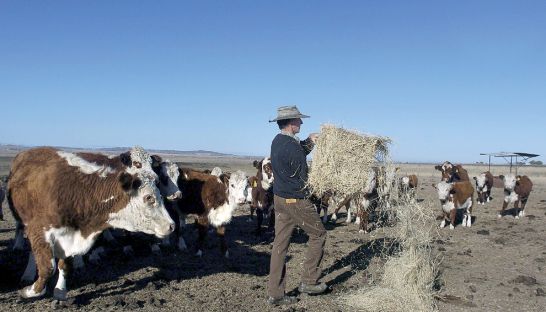Industry has beef with imports
Industry has beef with imports
The Australian government has approved live cattle exports to Cambodia for feeder and slaughter, but the local industry has questioned the move, citing a lack of any modern slaughterhouse facilities in the Kingdom.

In what is being touted as an effort to diversify Australia’s livestock exports and penetrate the Southeast Asia region’s rapid growth, Australia’s agriculture minister, Barnaby Joyce, announced yesterday that 10,000 head of cattle have been approved for export to Cambodia.
“This government is serious about delivering greater market access for our agricultural producers, including cattle producers, many of whom are doing it tough at the moment because of drought,” Minister Joyce was quoted as saying in the statement.
Ben Hindle, CEO of the Northern Territory Live Exporters Association in Australia, said the private sector had been urging the government to open the trade lines for years.
“We have been pushing this idea for three years, with one key exporter doing a lot of work to start exporting to Cambodia,” Hindle said without revealing the name of the firm involved.
“I have 100 per cent confidence that the ESCAS protocol will be followed from point of sale to slaughter, all the way down the supply chain. Our concern is first and foremost the welfare of Australia’s animals.”
Australia’s ESCAS, or Exporter Supply Chain Assurance System, was introduced by Australia’s now ex-Labor government in 2012 following a ban on all live exports, which was prompted by reports of barbaric treatment of Australian animals in Indonesia in 2011.
Under the guidelines of ESCAS, which were recommended by the World Organization for Animal Health, exporters are required to provide traceable documents open to independent audit on all supply-chain operations, from paddock to slaughter.
Slaughterhouse and export facilities found to be unsanitary; causing undue stress or excitation; hampering animals’ natural behaviours; or involving tripping, throwing, dropping or treating the animals inhumanely will be subject to corrective action, according Australia’s ESCAS.
But Cambodia’s slaughterhouses are a far cry from being up-to-standard.
In August last year, the Post reported the gruesome details of Cambodia’s rudimentary slaughterhouses, which are more recognisable as simple tin-roof structures with no walls and cold cement floors. There, in the middle of the night, pigs are left to wait only metres from hanging carcasses before being coaxed, beaten and eventually stabbed quickly in the throat and bled out.
Mong Reththy, among Cambodia’s biggest agricultural tycoons, with pig farming and rubber and mango plantation operations, said Cambodia does not have one cow, pig or even chicken slaughter facility up to international standards and that the killing of animals remains a manual procedure.
“Who is the Australian government exporting to?”
“Now our animal slaughter is done only by hand. The word standard implies a basic need for modern factories to kill animals in the highest possible quality. There is no such standard animal slaughter in Cambodia,” Reththy told the Post. “If they are planning on exporting their cows here, they need to build animal slaughter facilities too.”
Sen Sovann, deputy director general of Cambodia’s Ministry of Agriculture Fisheries and Forestry declined to comment on how many up-to-standard livestock facilities were operational in the Kingdom.
“[But] we welcome the proposal and the open discussion between the two governments about the details of the protocols and what we need to have and do to meet them,” he said.
Despite the strict demands Australia is reportedly imposing on Cambodia’s livestock trade industry, Lisa Chalk, spokeswoman for Animals Australia, called for the Australian and Cambodian governments to reconsider the deal, or to first ensure proper abattoir facilities are built.
“It doesn’t make ethical or economic sense to put live animals through the risks and stress of long distance sea transport only to be slaughtered when they arrive in destination countries,” she explained.
“We would urge the Cambodian government to import Australian meat as an alternative to live animals.Slaughterhouses in Australia operate under strict guidelines including hygiene requirements that would undoubtedly meet Cambodian requirements.”
phnompenh post













